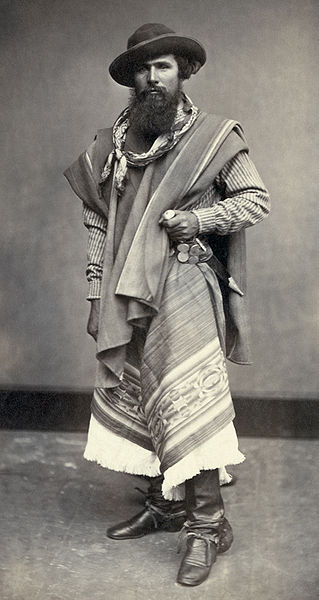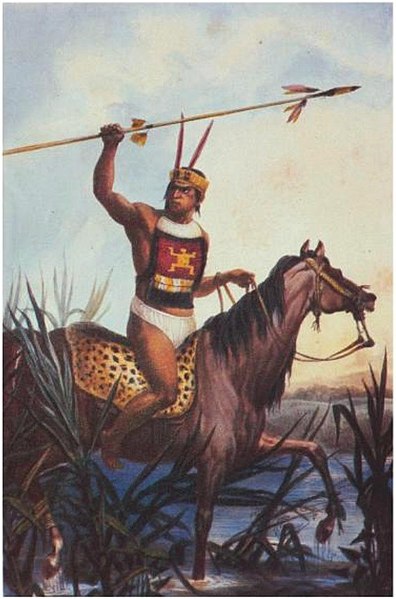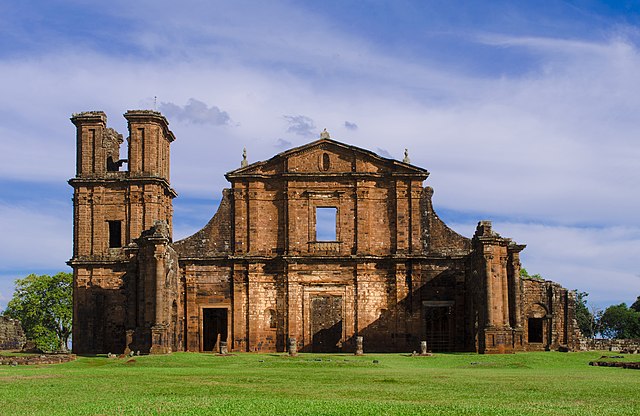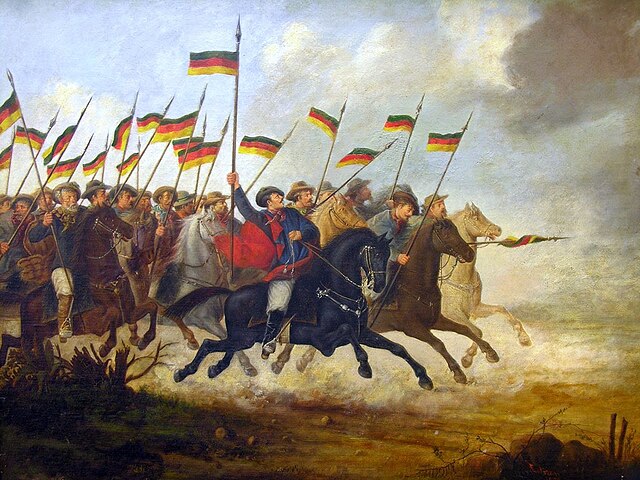A gaucho or gaúcho is a skilled horseman, reputed to be brave and unruly. The figure of the gaucho is a folk symbol of Argentina, Uruguay, Rio Grande do Sul in Brazil, the southern part of Bolivia, and the south of Chilean Patagonia. Gauchos became greatly admired and renowned in legend, folklore, and literature and became an important part of their regional cultural tradition. Beginning late in the 19th century, after the heyday of the gauchos, they were celebrated by South American writers.
Gaucho from Argentina, photographed in Peru, 1868
The earliest depiction of a Uruguayan gaucho (Emeric Essex Vidal, Picturesque Illustrations of Buenos Ayres and Monte Video, 1820)
Spanish official Félix de Azara, by Goya
Güemes and his gauchos: re-enactment
Rio Grande do Sul is a state in the southern region of Brazil. It is the fifth-most populous state and the ninth-largest by area. Located in the southernmost part of the country, Rio Grande do Sul is bordered clockwise by Santa Catarina to the north and northeast, the Atlantic Ocean to the east, the Uruguayan departments of Rocha, Treinta y Tres, Cerro Largo, Rivera, and Artigas to the south and southwest, and the Argentine provinces of Corrientes and Misiones to the west and northwest. The capital and largest city is Porto Alegre. The state has the highest life expectancy in Brazil, and the crime rate is relatively low compared to the Brazilian national average. Despite the high standard of living, unemployment is still high in the state, as of 2017. The state has 5.4% of the Brazilian population and is responsible for 6.6% of the Brazilian GDP.
A Native American chief (tribe of Charrúa).
The historic town of São Miguel das Missões
Rebel cavalry during the Farroupilha Revolution.
Giuseppe Garibaldi leading the Riograndense navy to Laguna. Painting by Lucílio de Albuquerque, 1916.








